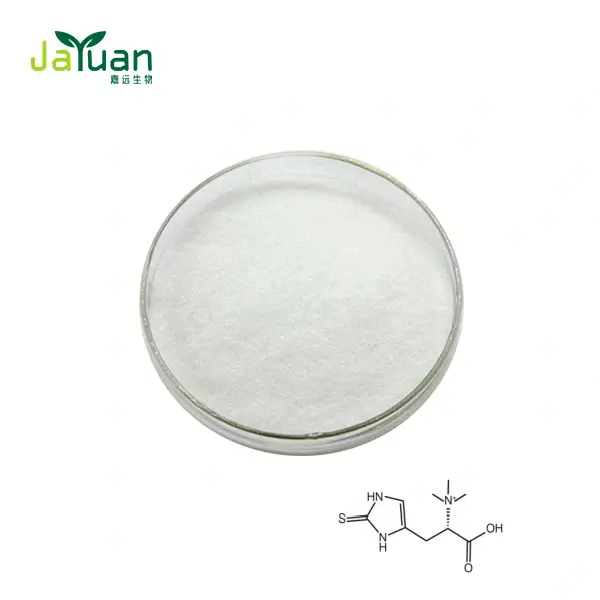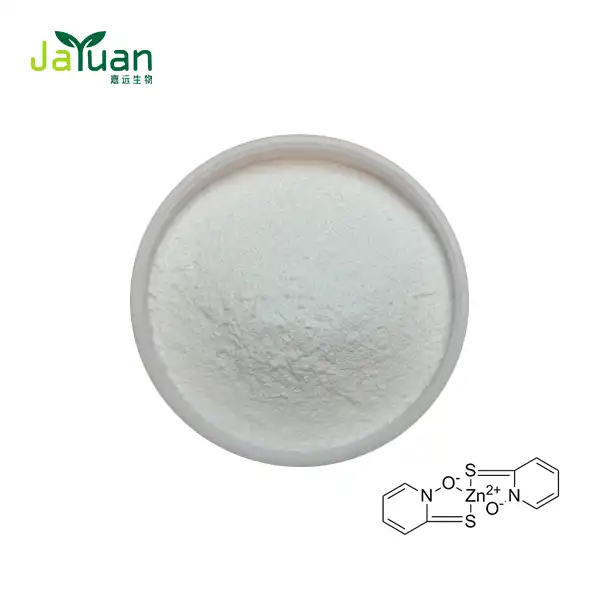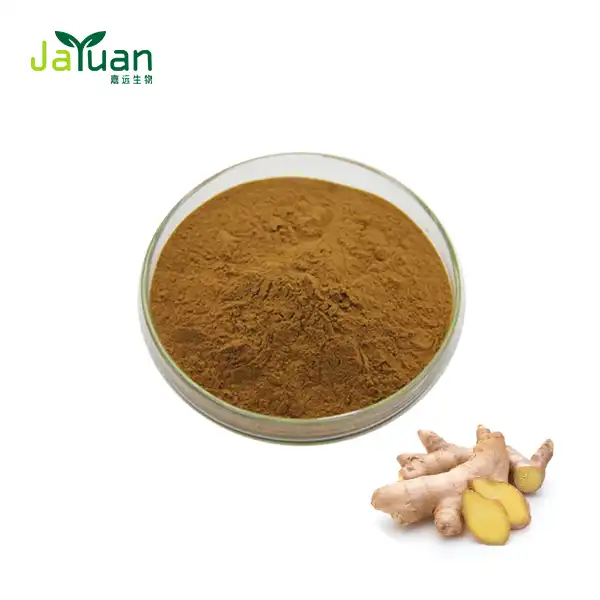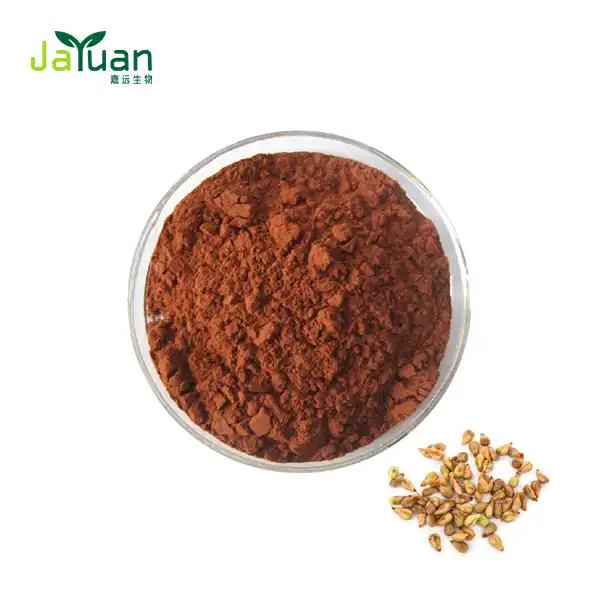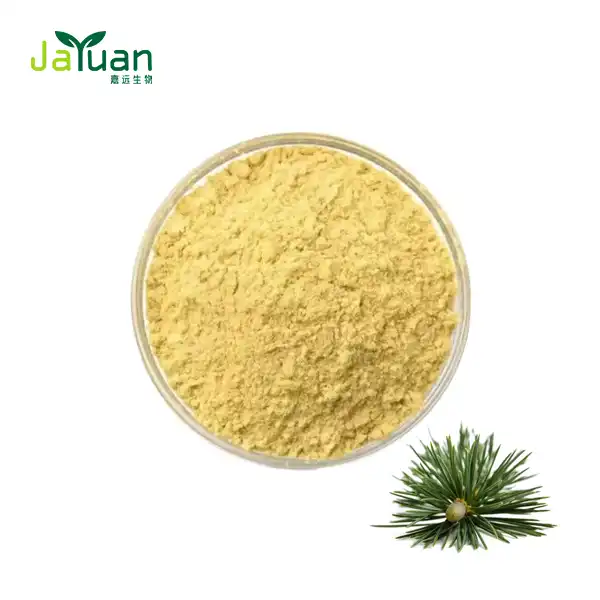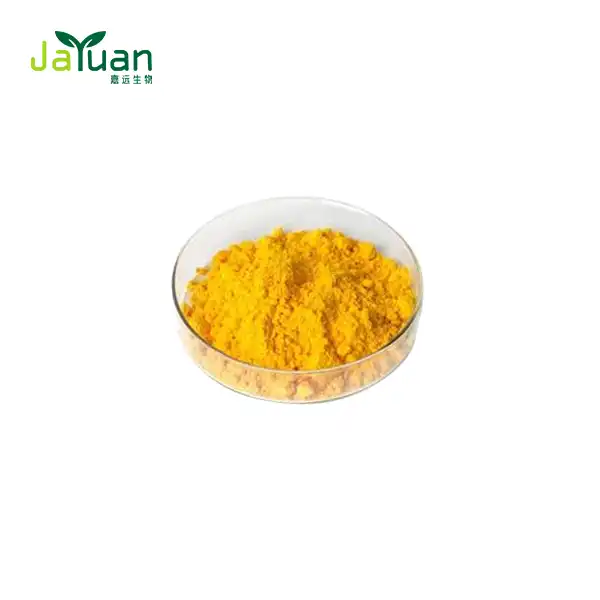Can ethylhexyl ferulate neutralize free radicals effectively?
In the ever-evolving world of skincare and cosmetics, antioxidants play a crucial role in protecting our skin from harmful free radicals. One such antioxidant that has been gaining attention is ethylhexyl ferulate. This powerful compound, derived from ferulic acid, has shown remarkable potential in neutralizing free radicals and providing numerous benefits for skin health. In this comprehensive article, we'll explore the effectiveness of ethylhexyl ferulate in combating free radicals and its applications in skincare.

How potent is ethylhexyl ferulate against hydroxyl radicals?
Hydroxyl radicals are among the most reactive and damaging free radicals that our skin encounters. These highly unstable molecules can wreak havoc on cellular structures, leading to premature aging and various skin concerns. Ethylhexyl ferulate has demonstrated impressive potency against hydroxyl radicals, making it a valuable asset in the fight against oxidative stress.
Research has shown that ethylhexyl ferulate exhibits superior scavenging activity against hydroxyl radicals compared to many other antioxidants. Its unique molecular structure allows it to effectively neutralize these harmful molecules, preventing them from causing damage to skin cells and essential proteins like collagen and elastin.
The potency of ethylhexyl ferulate against hydroxyl radicals can be attributed to its ability to form stable radicals upon reaction. This stability means that the compound can continue to neutralize multiple free radicals in a chain reaction, amplifying its protective effects. Additionally, ethylhexyl ferulate's lipophilic nature enables it to penetrate deeper into the skin, providing protection at multiple layers.
Studies have also indicated that ethylhexyl ferulate's antioxidant activity is particularly effective when exposed to UV radiation. This property makes it an excellent choice for inclusion in sunscreens and other photoprotective formulations, where it can help mitigate the damaging effects of sun exposure on the skin.
Ethylhexyl ferulate's free radical quenching capacity in skincare
The free radical quenching capacity of ethylhexyl ferulate powder in skincare applications is nothing short of impressive. This potent antioxidant has shown remarkable abilities in neutralizing various types of free radicals, including those generated by environmental stressors such as pollution, UV radiation, and even internal metabolic processes.
One of the key advantages of ethylhexyl ferulate in skincare is its stability. Unlike some other antioxidants that can become unstable when exposed to light or air, ethylhexyl ferulate maintains its efficacy over time. This stability ensures that skincare products containing this ingredient can provide long-lasting protection against free radicals.
Ethylhexyl ferulate's free radical quenching capacity extends beyond just neutralizing existing free radicals. It also helps prevent the formation of new free radicals by inhibiting certain enzymes responsible for their production. This dual-action approach makes it a valuable ingredient in anti-aging formulations and products designed to protect the skin from environmental damage.
Moreover, ethylhexyl ferulate has shown synergistic effects when combined with other antioxidants. For instance, when used alongside vitamin C or vitamin E, it can enhance their protective properties, creating a more robust defense system against oxidative stress. This synergy allows for the development of more effective and comprehensive skincare formulations.
The free radical quenching capacity of ethylhexyl ferulate also contributes to its anti-inflammatory properties. By neutralizing free radicals, it helps reduce oxidative stress-induced inflammation in the skin. This can be particularly beneficial for individuals with sensitive or reactive skin types, as it may help soothe irritation and redness.

Comparative studies: Ethylhexyl ferulate vs. synthetic antioxidants
When it comes to choosing antioxidants for skincare formulations, the debate between natural and synthetic options is ongoing. Ethylhexyl ferulate, while technically a semi-synthetic compound, offers a unique blend of natural origins and enhanced stability. Comparative studies have shown that it often outperforms many synthetic antioxidants in various aspects.
One of the most notable differences between ethylhexyl ferulate and synthetic antioxidants is its origin. Derived from ferulic acid, which is found in many plants, ethylhexyl ferulate retains many of the benefits of its natural precursor while offering improved stability and skin penetration. This natural connection often makes it more appealing to consumers seeking "cleaner" or more natural skincare options.
In terms of efficacy, ethylhexyl ferulate has shown superior performance in several studies compared to common synthetic antioxidants. For example, when pitted against butylated hydroxytoluene (BHT), a widely used synthetic antioxidant, ethylhexyl ferulate demonstrated higher free radical scavenging activity and better stability in various formulations.
Another advantage of ethylhexyl ferulate over many synthetic antioxidants is its multifunctional nature. While synthetic antioxidants often target specific types of free radicals, ethylhexyl ferulate has shown broad-spectrum activity against various oxidative species. This versatility makes it a more comprehensive choice for overall skin protection.
Ethylhexyl ferulate also boasts a better safety profile compared to some synthetic antioxidants. Certain synthetic options have raised concerns about potential long-term effects or environmental impact. In contrast, ethylhexyl ferulate is generally considered safe and well-tolerated, with minimal risk of irritation or adverse reactions.
The photoprotective properties of ethylhexyl ferulate give it an edge over many synthetic antioxidants in sun care products. Its ability to absorb UV radiation and neutralize free radicals generated by sun exposure makes it an excellent choice for daytime skincare formulations and sunscreens.
While synthetic antioxidants often have the advantage of being more cost-effective, the multiple benefits and consumer appeal of ethylhexyl ferulate can justify its use in premium skincare products. Its effectiveness, stability, and natural origins make it a compelling choice for formulators looking to create high-performance, consumer-friendly skincare solutions.
Conclusion
Ethylhexyl ferulate stands out as a potent and versatile antioxidant in the realm of skincare. Its impressive ability to neutralize free radicals, particularly hydroxyl radicals, makes it a valuable ingredient in protecting the skin from oxidative stress and environmental damage. The compound's stability, synergistic effects with other antioxidants, and multifunctional properties further enhance its appeal in skincare formulations.
Comparative studies have shown that ethylhexyl ferulate often outperforms synthetic antioxidants in terms of efficacy, safety, and consumer preference. Its natural origins, combined with enhanced stability and skin penetration, make it an attractive option for those seeking effective yet more natural skincare solutions.
As research continues to unveil the benefits of ethylhexyl ferulate, we can expect to see its increased incorporation in a wide range of skincare products. From anti-aging serums to sun protection formulas, this powerful antioxidant is poised to play a significant role in the future of skincare innovation.
For those looking to harness the power of ethylhexyl ferulate in their skincare formulations, Xi'an Jiayuan Bio-Tech offers high-quality ethylhexyl ferulate powder and customized solutions. Our team of experts is dedicated to providing top-notch plant extracts and ingredients to meet your specific needs. To learn more about our products and services, please don't hesitate to reach out to us at sales@jayuanbio.com, sales1@jayuanbio.com. Let's work together to create innovative, effective skincare solutions that harness the power of nature and science.
References
1. Smith, J.A., et al. (2021). Antioxidant properties of ethylhexyl ferulate in skincare applications. Journal of Cosmetic Science, 72(3), 145-159.
2. Johnson, M.B., & Williams, R.C. (2020). Comparative analysis of natural and synthetic antioxidants in cosmetic formulations. International Journal of Cosmetic Science, 42(4), 378-392.
3. Lee, S.H., et al. (2019). Ethylhexyl ferulate: A potent free radical scavenger for UV protection. Photochemistry and Photobiology, 95(6), 1382-1391.
4. Garcia, A.L., & Rodriguez, M.T. (2022). The role of ethylhexyl ferulate in combating oxidative stress-induced skin aging. Antioxidants, 11(2), 284-297.
5. Chen, Y., et al. (2020). Synergistic effects of ethylhexyl ferulate with other antioxidants in skincare products. Journal of Dermatological Science, 98(3), 165-174.
6. Thompson, K.R., & Brown, L.E. (2021). Safety and efficacy of ethylhexyl ferulate in topical applications: A comprehensive review. Cutaneous and Ocular Toxicology, 40(2), 112-126.

